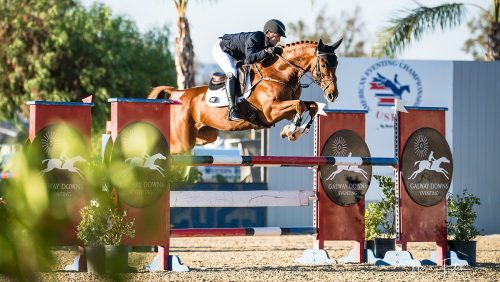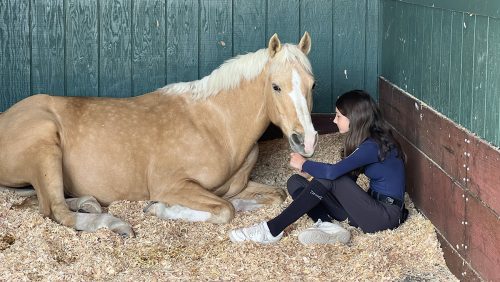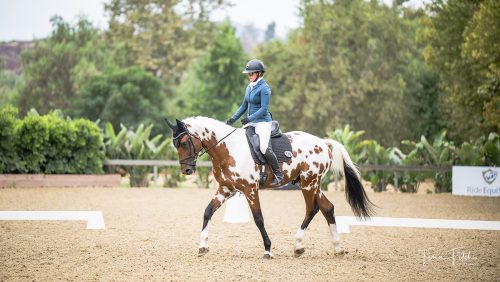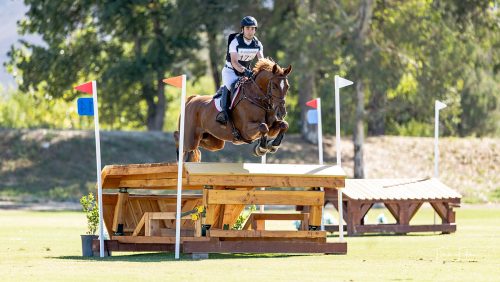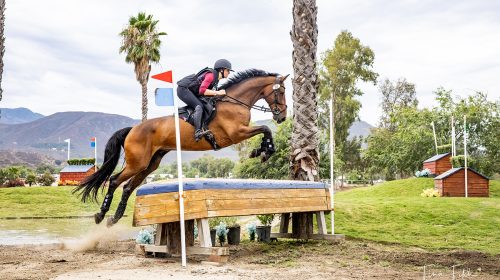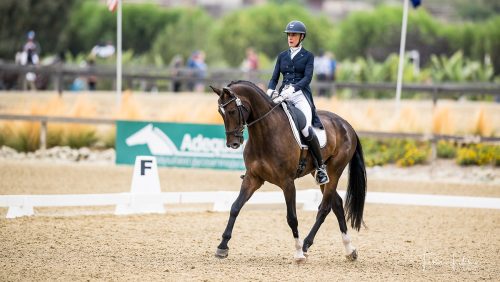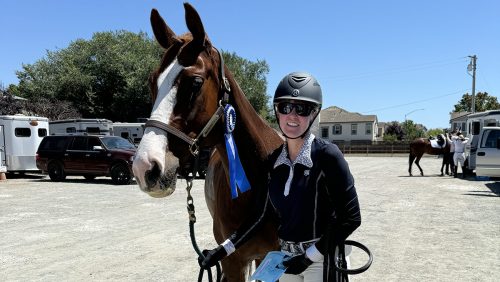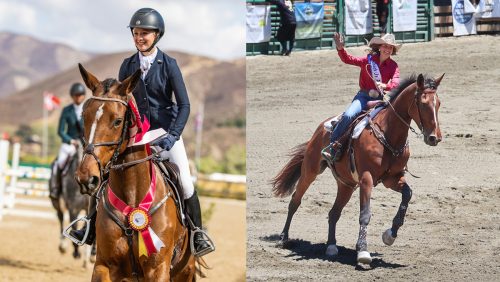Westerville, Ohio—Nov. 14
Day 2 of the Emerging Athletes Program National Training Session began at 8 a.m. sharp, with the riders ready to establish a deeper connection with their partners at the Austin E. Knowlton Center for Equine Science at Otterbein University (Ohio).
In addition to riding with lead clinician Peter Wylde and serving as jump crew today, the young riders once again participated in stable management with Anne Thornberry, including a written test. They also received media training, new this year in place of Kip Rosenthal’s sports psychology seminar, as she was unable to make the clinic due to illness.
Wylde started each group off with warming up their horses, focusing again on transitions. Wylde explained how the goal was to make each horse supple and responsive for the coming jump exercises.
Ramsome Rombauer switched horses today after her horse Cully seemed to be getting stronger and stronger after every fence. She discussed the decision with Wylde, and after hacking some of the alternates, the two agreed on a chestnut gelding named Mark. The young horse does need a boost of confidence while on course, however, Rombauer was able to work well with Mark.
Caroline Johnson encountered some trouble with her assigned mount Noah when he refused to trot along the wall next to the one-stride combination, so Wylde took the reins to get the horse relaxed and focused on the task at hand.
“The biggest thing I’ve learned with horses is patience,” said Wylde has he calmly coaxed Noah through the gap several times.
ADVERTISEMENT
Johnson was able to get back on and communicate effectively with the Noah, and by the time the group began over-fences work, the pair jumped confidently around several exercises and courses.
Wylde again introduced the jumps slowly, having the riders trot back and forth over a crossrail to warm up the horses. He then had riders canter a single on the right lead placed against the wall, rolling back through the middle of the ring to another box single set parallel to the outside wall.
Landing off the first single, Megan Spitzer’s horse Pluto charged ahead and showed his friskiness by throwing in a couple of bucks, unseating Spitzer.
“He’s just being naughty,” said Wylde as he hacked the horse around. “It’s a little bit discipline and telling him, ‘Hey, when the saddle and bridle are on we have to work.’ So I’m just trying to get him to accept my hand and not be stiff. And then the minute he’s soft, then I can be soft as well.”
Before moving on to course work, Wylde had one more exercise for the riders, this time designed to test the horse’s ridability and the rider’s planning. A simple enough request, he asked riders to canter the single along the wall and trot out over the crossrail at the other end of the ring. Several pairs struggled with the task; some horses muscled their way over the fence at a canter while some riders weren’t thinking far enough ahead to prepare for the trot. This thinking ahead played well into the bending lines Wylde set for later work.
Today Wylde set a course that asked many different questions, including two bending lines, a trot jump, and a one-stride set along the wall. His main focus for each group was striding, having each pair test out different number of strides in the bending lines.
Instead of telling everyone the exact striding to ride each bending line, he let the riders choose the best number for their horses, and then had them adjust accordingly. One exercise had riders jumping a diagonal oxer bending to a liverpool in whatever number they chose, then circling back around to jump the line again with one less stride.
ADVERTISEMENT
“Numbers are not a big deal, but it’s interesting to see how you have the ability to do anything,” remarked Wylde. “You can do anything: nine, 10, seven, but as you get to more sophisticated riding you need to be able to have that understanding and to know that you can do whatever it is you can do. And then be able to do it.”
“One of the exercises I love to do at home is to set a line and start it at a nice six [strides] and set it exactly at 84′ and then more it 2 feet out and then do it again,” he continued. “And then move it 2 feet out and do it again. You’d be surprised how long you can make that six strides if you just get that feeling of what it takes to do that.”
Choosing the right distance also became a topic in the clinic when Danielle Roskens and her horse Macintosh found a quiet distance into a bending seven strides to the in-and-out. Roskens was able to help her mount and made the jump work out well and the two flowed out to finish the combination strong.
“In courses we never get to always perfect distances,” Wylde said. “Especially as [the jumps] get bigger and bigger and bigger and a really good rider is the rider that can make the not-great distance work out perfectly. One of the things as you get to higher-level riding is your ability to make what ever distance happens the best distance for the horse possible.
“Getting to the perfect distance isn’t always the right thing. If you’re a little bit long, how do you make it work well?” he continued. “Do you mess up the horse? Or are you able to just soften and just close your leg and support the horse and still make a really great jump even if the distance is not great.”
Tomorrow the groups will ride off against each other in a Nations Cup-format competition, and Wylde believes all the riders are ready to show what they have learned on the final day of the clinic.
Read about Day 1’s activities in “Back To Basics On The First Day Of The EAP Nationals.”






